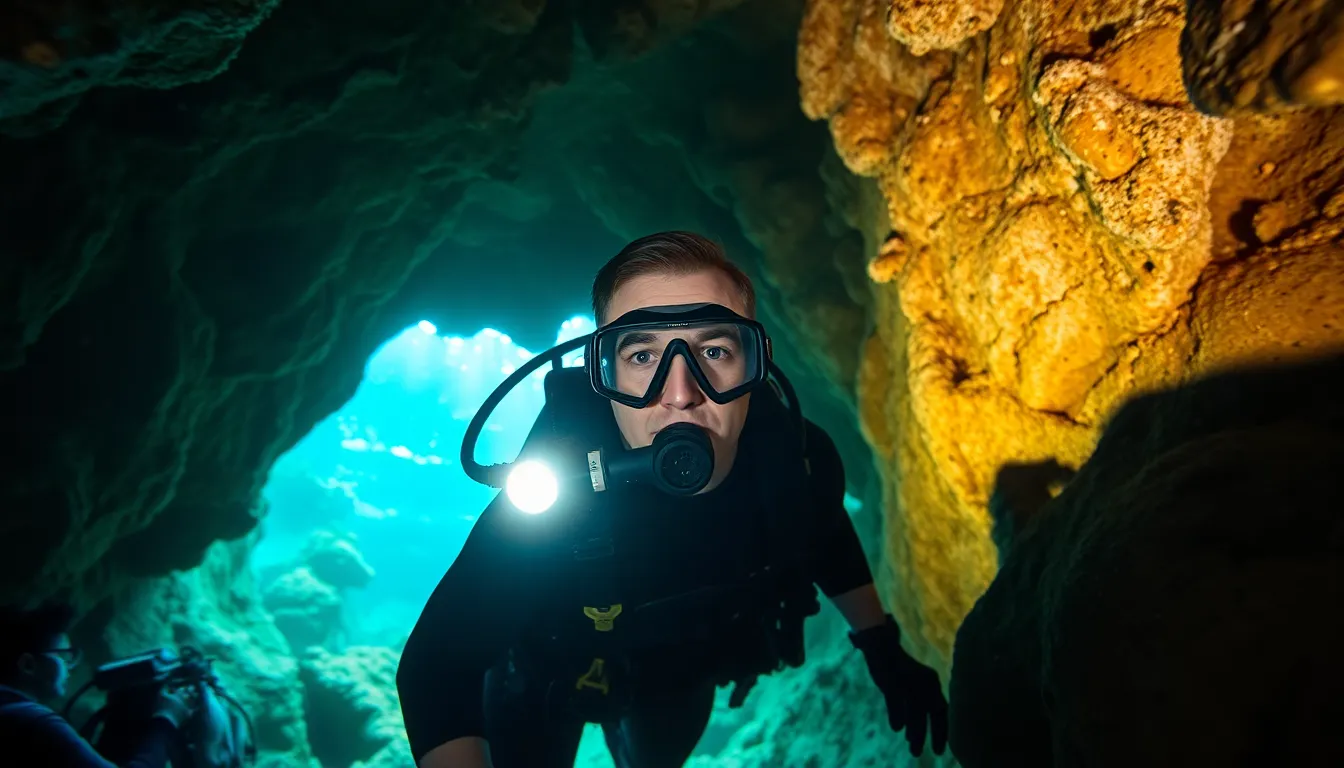Gone are the days when homeschooling meant sitting at the kitchen table with mom and a pile of textbooks. Today’s homeschooling landscape offers a vibrant spectrum of educational approaches that can make traditional classrooms look as outdated as chalk and blackboards.
From tech-savvy virtual academies to nature-based learning adventures, parents can now customize their child’s education like never before. Whether it’s classical education that channels ancient wisdom or unschooling that throws the rulebook out the window, there’s a homeschooling style to match every family’s unique vision and values. Modern homeschooling isn’t just an alternative to conventional education – it’s a revolutionary movement that’s reshaping how we think about learning.
Table of Contents
ToggleWhat Is Homeschooling: A Modern Perspective
Homeschooling represents an educational approach where parents oversee their children’s learning outside traditional school settings. Modern homeschooling integrates diverse teaching methods with customized learning experiences tailored to each student’s pace.
Parents act as primary educators or learning coaches while utilizing:
- Digital platforms (Khan Academy Google Classroom Outschool)
- Online curricula with structured lesson plans
- Educational apps for skill development
- Virtual tutoring sessions with subject experts
The current homeschooling landscape encompasses:
| Component | Description | Percentage of Usage |
|---|---|---|
| Online Resources | Digital textbooks interactive modules | 85% |
| Hands-on Activities | Practical experiments field trips | 72% |
| Community Programs | Co-ops sports groups workshops | 64% |
| Traditional Materials | Physical textbooks workbooks | 58% |
Modern homeschooling environments feature:
- Flexible scheduling that adapts to family routines
- Personalized assessment methods tracking individual progress
- Integration of real-world experiences into daily lessons
- Collaborative learning opportunities through homeschool networks
Technology plays a central role by providing:
- Live streaming classes with expert instructors
- Interactive educational games enhancing engagement
- Virtual field trips to museums historical sites
- Online assessment tools measuring progress
The legal framework supports homeschooling through:
- State-specific guidelines for curriculum requirements
- Standardized testing options for academic evaluation
- Documentation systems for tracking educational progress
- Accreditation pathways for college preparation
- Individualized learning paths based on student interests
- Acceleration or remediation as needed
- Integration of specialized subjects
- Development of independent study skills
Traditional Homeschooling Method
Traditional homeschooling follows a structured approach similar to conventional classroom education. This method emphasizes direct parent instruction combined with comprehensive textbook-based learning materials.
Parent-Led Curriculum
Parents maintain complete control over their children’s educational journey through carefully selected textbooks educational materials from established publishers like Saxon Math Abeka or BJU Press. The curriculum typically includes core subjects:
- Reading assignments from literature classics poetry collections
- Mathematics instruction using systematic workbooks practice sheets
- Science lessons incorporating lab experiments demonstrations
- Social studies covering history geography civics
- Language arts focusing on grammar composition vocabulary
Parents evaluate progress through regular assessments quizzes tests while adapting the teaching pace to match each child’s comprehension level. Many families supplement core subjects with enrichment activities like art projects music lessons foreign language study.
Structured Daily Schedule
Traditional homeschooling operates on a consistent timetable that mirrors conventional school hours. A typical daily schedule includes:
- Morning academic blocks for core subjects (8 AM – 12 PM)
- Designated lunch breaks social interaction (12 PM – 1 PM)
- Afternoon sessions for electives projects (1 PM – 3 PM)
- Regular assessment periods (weekly monthly)
- Planned physical activity periods
The schedule maintains fixed start end times for each subject creating predictable routines. Parents track attendance completed assignments through detailed logs portfolios documenting educational progress throughout the academic year.
Classical Education Approach
Classical education incorporates time-tested teaching methods from ancient Greece and Rome. This approach emphasizes structured learning through three distinct developmental stages, focusing on developing critical thinking and analytical skills.
The Trivium Method
The Trivium method forms the foundation of classical education through three sequential stages: Grammar, Logic and Rhetoric. Students aged 5-10 master fundamental facts and rules in the Grammar stage, absorbing core knowledge across subjects. The Logic stage engages students aged 10-14 in understanding relationships between concepts through debate and analysis. Students aged 14-18 enter the Rhetoric stage, learning to express ideas persuasively through writing and speech. This systematic progression develops strong analytical abilities and communication skills.
Literature-Based Learning
Classical education centers on great literary works spanning ancient to modern times. Students read primary sources like Homer’s Odyssey, Plato’s Republic and Shakespeare’s plays rather than textbook summaries. The curriculum integrates history, philosophy and literature chronologically, starting with ancient civilizations and progressing to modern times. Children analyze complex texts, participate in Socratic discussions and write analytical essays to develop deep comprehension. This immersion in classical literature builds advanced vocabulary, reading comprehension and critical thinking abilities.
Montessori Homeschooling
Montessori homeschooling adapts Dr. Maria Montessori’s educational philosophy for home learning environments. This method emphasizes hands-on exploration, self-directed learning, and developmentally appropriate materials.
Child-Led Learning
Montessori homeschooling places children at the center of their educational journey through independent exploration and discovery. Students select activities from prepared materials matching their developmental stage and interests. A 3-year-old might choose counting beads for mathematical concepts while a 7-year-old explores advanced geometry work with metal insets. Children work at their own pace, repeating activities until mastery without artificial timelines or grades. The teacher serves as an observer and guide, introducing new materials when a child demonstrates readiness.
Prepared Environment
The Montessori homeschool environment features low shelves with carefully curated materials organized by subject area. Each learning zone contains specific Montessori materials like the Pink Tower for visual discrimination, Metal Insets for writing preparation and the Binomial Cube for mathematical concepts. Materials remain accessible on open shelves, allowing children to select work independently. The space incorporates child-sized furniture, uncluttered workspaces and natural lighting. Order and cleanliness help children develop organizational skills while moving freely between activities. Nature-based elements like plants and animal specimens enhance the prepared environment’s connection to the real world.
Unschooling Method
Unschooling represents an educational philosophy that embraces natural, child-led learning without formal curriculum or structure. This approach trusts children’s innate curiosity and desire to learn, allowing them to explore subjects based on their interests and natural development.
Natural Learning Philosophy
Unschooling follows the principle that learning occurs naturally through daily life experiences rather than structured lessons. Children engage with real-world activities like cooking (measuring ingredients teaches mathematics), gardening (understanding biology), or managing money (learning financial literacy). The environment becomes a classroom, with parents acting as facilitators who provide resources, answer questions, and create opportunities for discovery. This method recognizes that children master skills at different paces and validates multiple forms of intelligence through hands-on experiences.
Interest-Driven Education
Interest-driven learning forms the core of unschooling, letting children pursue topics that spark their curiosity. Parents observe their children’s natural inclinations and provide relevant materials, experiences, and connections to support these interests. A child fascinated by space receives astronomy books, visits planetariums, and connects with astronomy groups. This approach creates authentic learning experiences through documentaries, field trips, community involvement, and expert interactions. Children develop intrinsic motivation as they direct their educational journey, leading to deeper understanding and retention of knowledge.
Charlotte Mason Approach
The Charlotte Mason approach integrates literature-rich education with nature-based learning. This method emphasizes the use of high-quality literature, real-world experiences, and short focused lessons to develop well-rounded learners.
Living Books
Living books form the cornerstone of the Charlotte Mason curriculum, replacing traditional textbooks with narrative-rich literature. These books include classic literature, biographies, historical accounts, and scientific works written by authors passionate about their subjects. Students engage with primary sources, experiencing history, science, and culture through detailed narratives rather than condensed summaries. The approach incorporates diverse genres such as Shakespeare plays, poetry collections, and historical fiction to build vocabulary and critical thinking skills. Children practice narration by retelling stories in their own words, demonstrating comprehension and developing communication abilities.
Nature Studies
Nature studies in the Charlotte Mason method incorporate regular outdoor exploration and detailed observation of natural phenomena. Students maintain nature journals to document their findings through detailed sketches, measurements, and written observations. The curriculum includes weekly nature walks, seasonal plant identification, weather pattern tracking, and wildlife observation. Children learn to identify local flora and fauna, understand ecological relationships, and develop scientific inquiry skills through hands-on experiences. Nature studies connect to other subjects through activities like botanical drawings in art, weather data analysis in mathematics, and ecosystem descriptions in writing assignments.
Eclectic Homeschooling
Eclectic homeschooling combines multiple educational approaches to create a personalized learning experience. This method draws from various homeschooling styles to match each child’s unique learning preferences, interests, and educational goals.
Mixing Different Methods
Eclectic homeschoolers integrate elements from traditional textbooks, Montessori materials, classical literature, and online resources into their daily routine. Parents select specific components from each method: mathematical concepts through Saxon Math programs, writing through Institute for Excellence in Writing curricula, science through hands-on experiments, history through living books. The approach incorporates structured lessons for core subjects alongside unschooling practices for electives such as art, music, or foreign languages. Educational tools include digital platforms, manipulatives, workbooks, documentaries, educational games, field trips, and co-op classes.
Customized Learning Plans
Eclectic homeschooling adapts to each student’s progress through individualized learning plans. Parents track achievement using assessment tools like standardized tests, portfolios, or project evaluations. The curriculum incorporates multiple teaching methods: visual learners use video tutorials, kinesthetic learners engage in hands-on projects, auditory learners utilize audiobooks or podcasts. Learning objectives align with state standards while maintaining flexibility to pursue deeper exploration of subjects that capture student interest. Weekly schedules balance structured activities with independent study periods, allowing students to master concepts at their own pace.
Online Homeschooling Programs
Online homeschooling programs combine digital technologies with structured education to create comprehensive learning experiences. These programs offer flexibility through virtual platforms while maintaining academic rigor equivalent to traditional schools.
Virtual Classrooms
Virtual classrooms replicate traditional classroom environments through interactive online platforms. Students participate in real-time video sessions with certified teachers alongside peers from diverse locations. These platforms integrate multimedia presentations whiteboard tools chat functions breakout rooms for group projects. Teachers conduct live lectures monitor student progress provide immediate feedback through screen sharing digital annotations. Modern virtual classrooms include features like:
- Interactive polling tools for instant student engagement
- Recorded sessions for review flexibility
- Digital hand-raising participation tracking
- Collaborative document sharing spaces
- Integrated assessment platforms
Digital Curriculum
Digital curriculum platforms deliver structured content through multimedia formats texts videos interactive exercises. Students access personalized learning paths that adapt to their pace mastery levels. Core features of digital curricula include:
- Auto-graded assignments with instant feedback
- Progress tracking dashboards
- Interactive simulations science experiments
- Virtual field trips historical reenactments
- Customizable lesson sequences based on learning styles
| Subject Area | Digital Components |
|---|---|
| Mathematics | Adaptive problem sets |
| Science | Virtual lab simulations |
| Language Arts | Interactive reading tools |
| Social Studies | Digital primary sources |
| Foreign Languages | Speech recognition software |
Conclusion
The diverse landscape of homeschooling offers families unprecedented flexibility in choosing educational approaches that align with their values and their children’s needs. From traditional structured methods to free-flowing unschooling each style brings unique benefits to the learning experience.
Parents now have access to countless resources technology and community support systems that make homeschooling more accessible than ever before. Whether families prefer classical education living books hands-on Montessori materials or digital platforms they’ll find options that work for their specific situation.
The future of homeschooling continues to evolve blending time-tested methods with modern innovations. This educational choice empowers families to create personalized learning environments where children can thrive and develop their full potential.




